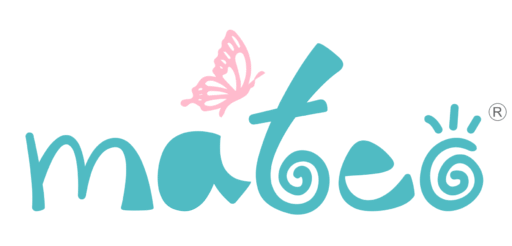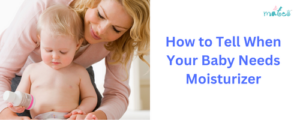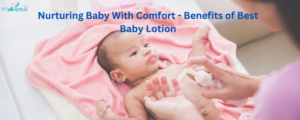When a baby comes to a family, it is a great event that makes everyone happy, nervous, and some obligations appear. This bunch of duties contains cleansing of the baby’s body and general welfare as the top one. Enacting a newborn hygiene checklist is an important action that makes it possible to set a way of life with healthy habits that will guarantee your baby’s wellness. This complete guide will cover the 10 crucial steps that you should follow to develop an all-inclusive and truly effective newborn hygiene checklist that will promote the health and happiness of a newborn.
11 Crucial Steps For Effective Newborn Hygiene Checklist

Step 1: Collect the necessities.
The first thing that should be done while creating the newborn hygiene survey checklist is to collect all needed supplies. Diapers with wipes, shampoo, soap, and lotion are also included. Moreover, buy a specific soft laundry detergent for washing baby clothes and bedding. Having all the basics in stock will help you get ready before the baby arrives and you should be able to take care of your child’s hygiene in a timely manner.
Step 2: Building a Changing Station.
Specify a particular place inside the house for changing diapers and observe hygiene quickly. Stock this changing station with all the pieces you may need: diapers, wipes, diaper rash cream and clean clothes. The well-structured changing station helps to keep cleanliness and have all the items needed just next to you.
Step 3: Create Bathing Habits
The task of bathing your newborn is a critical one that needs a lot of attention and care paid to detail. Develop your bathing routine that is convenient to you and your baby considering things such as time of the day and temperaments of your baby. Use a soft, gentle baby shampoo and soap to keep your little one’s sensitive skin clean without itching. Make sure that the water temperature is nice and warm, and always keep a close eye on your baby during bath time.
Read also: Is Soap Safe for Babies?
Step 4: Nail Care
New people born have very soft and even fragile nails that grow pretty fast. Make nail care part of your hygiene list. Use a manicure set for baby nails. Trim or file your baby’s nails with a gentle hand when he/she is sleeping or in a quiet mood to avoid any unnecessary pain.
Step 5: The Ear and Nose Cleaning
Cleansing the ears and the nose of the newborn is important to ensure hygiene and prevent infections. With the soft cotton swab end, clean the outer part of your baby’s ears; avoid inserting it into the ear canal, though. A bulb syringe can be useful for the nose of a baby, especially when a stuffy nose causes mucus to block them up. Consult your paediatrician for their guidance on the rightful ways of caring for the ears and the nose.
Step 6: Oral Hygiene
Your infant might be toothless; however, proper oral hygiene is essential. Using a damp, soft cloth massage your baby’s gums gradually each time they feed to remove any food residue. Start brushing your baby’s teeth using a natural bristle toothbrush and a fluoride-free toothpaste recommended by your paediatrician.
Step 7: Clothing Hygiene
Along with your brand-new baby, the right choice of clothes for the baby also makes it easier to keep your baby’s hygiene. Look for soft, breathable fabrics, especially cotton ones, to prevent skin irritations. Try to make sure that you are changing your baby’s clothes frequently, especially when they get dirty. Be careful of weather and if your baby is dressed properly. He should be comfortable and clean.
Step 8: Diapering Essentials
Proper diapers are one of the most important when it comes to newborn hygiene. Changing diapers immediately will help in preventing diaper rashes and other discomforts. Apply a diaper rash cream that’s gentle on the baby’s skin and helps in keeping it calm. You better not forget about eco-friendly disposable diapers or cloth diapers because they are both really fine.
Step 9: Health Reassessments.
Along with your normal hygiene regimen, give your newborn baby wellness checks at regular intervals. This appointment is a chance for your paediatrician to assess the baby’s growth and development as well as handle any relevant concerns that may emerge, and offer recommendations on hygiene maintenance.
Step 10: Adapt and change.
And as your baby develops, their hygiene will also change. Make sure that you are ready to flex your newborn hygiene checklist accordingly. Remain updated on age–related hygiene and continue to pay attention to your baby’s well-being as it hits the new milestones.
Step 11: Delicate Skin Care Hygiene
Newborn’s delicate skin with Mateo baby care products, which was designed specifically with a pH 5.5 for gentle care. Mateo diversity extends from fragrance-free skin care to sensitive wipes that cater to newborn baby needs. Maintain the health of your baby’s skin with proper care and attention, especially on areas that are often dry. Feeling safe that each item of Mateo is handmade with love and care, having a soothing and gentle skin effect on your baby’s delicate skin.
Conclusion:
Writing a newborn hygiene checklist should be a part of your proactive action and is a basic step to take your baby’s health into account. The 10 steps outlined are going to be the basis of good hygiene habits which ultimately leads to cleanliness, comfort, and general health. Do not forget, any babies are special, so it is ok to adapt these steps to fit your family life. You’ll have children that you can adequately prepare to raise well with a checklist for hygiene. The experience of parenthood is rich and rewarding.




